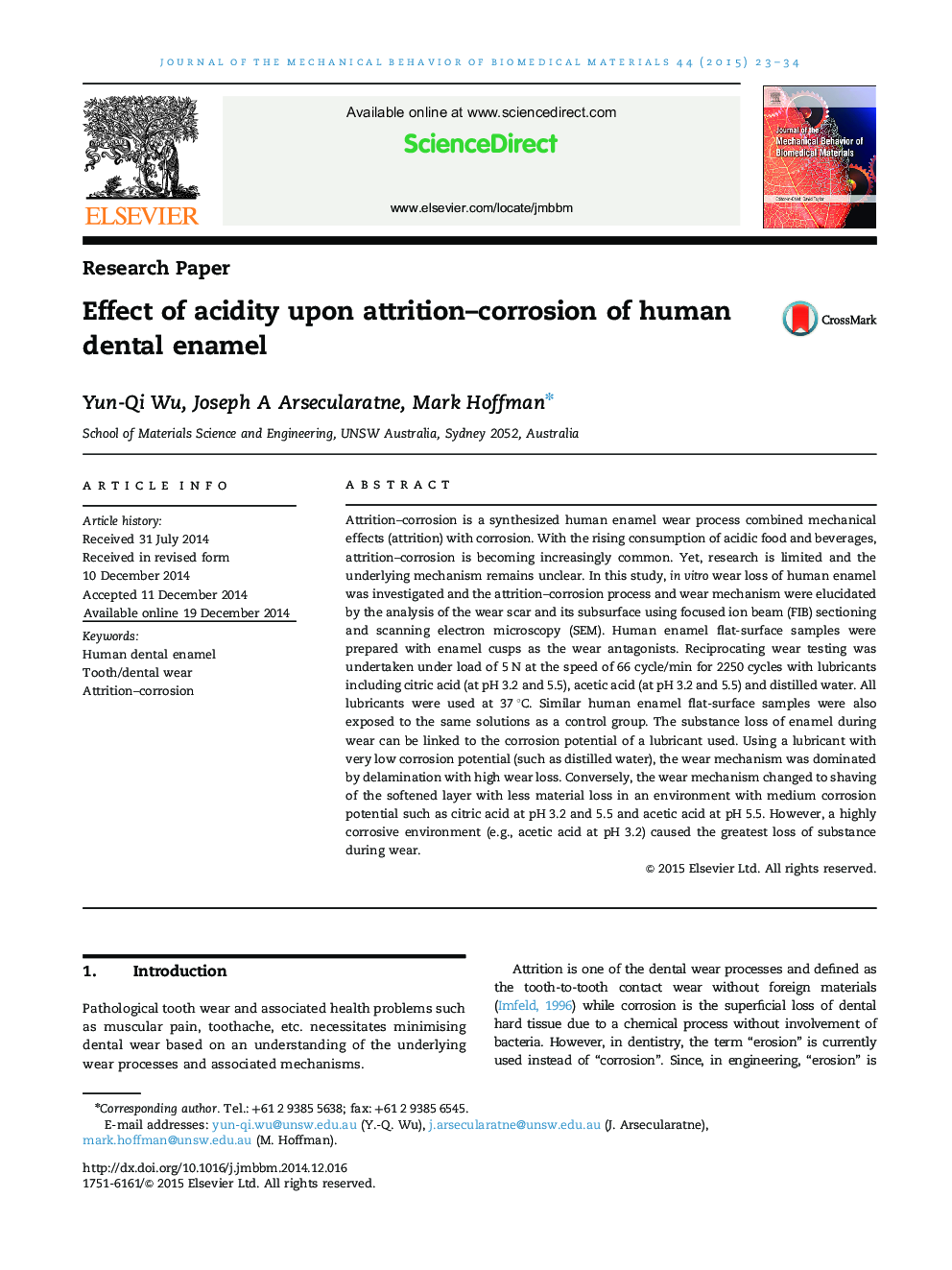| Article ID | Journal | Published Year | Pages | File Type |
|---|---|---|---|---|
| 810694 | Journal of the Mechanical Behavior of Biomedical Materials | 2015 | 12 Pages |
•Mechanism of tribocorrosion of enamel was shaving of the softened layer.•Low/medium acidity lubricants caused less wear loss of enamel than distilled water.•A High acidity lubricant caused greater wear loss of enamel than distilled water.•Wear loss of tribocorrosion was inversely proportional to hardness after corrosion.
Attrition–corrosion is a synthesized human enamel wear process combined mechanical effects (attrition) with corrosion. With the rising consumption of acidic food and beverages, attrition–corrosion is becoming increasingly common. Yet, research is limited and the underlying mechanism remains unclear. In this study, in vitro wear loss of human enamel was investigated and the attrition–corrosion process and wear mechanism were elucidated by the analysis of the wear scar and its subsurface using focused ion beam (FIB) sectioning and scanning electron microscopy (SEM). Human enamel flat-surface samples were prepared with enamel cusps as the wear antagonists. Reciprocating wear testing was undertaken under load of 5 N at the speed of 66 cycle/min for 2250 cycles with lubricants including citric acid (at pH 3.2 and 5.5), acetic acid (at pH 3.2 and 5.5) and distilled water. All lubricants were used at 37 °C. Similar human enamel flat-surface samples were also exposed to the same solutions as a control group. The substance loss of enamel during wear can be linked to the corrosion potential of a lubricant used. Using a lubricant with very low corrosion potential (such as distilled water), the wear mechanism was dominated by delamination with high wear loss. Conversely, the wear mechanism changed to shaving of the softened layer with less material loss in an environment with medium corrosion potential such as citric acid at pH 3.2 and 5.5 and acetic acid at pH 5.5. However, a highly corrosive environment (e.g., acetic acid at pH 3.2) caused the greatest loss of substance during wear.
Graphical abstractFigure optionsDownload full-size imageDownload high-quality image (285 K)Download as PowerPoint slide
